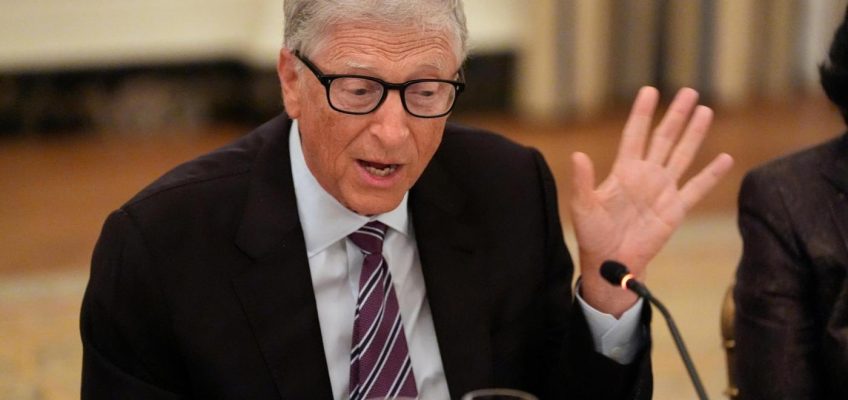By AAMER MADHANI
WASHINGTON (AP) — President Donald Trump hosted Pakistan’s prime minister, Shehbaz Sharif, for talks Thursday at the White House in the latest sign of warming relations between the United States and the South Asian nuclear power.
Related Articles
Ex-FBI Director James Comey charged with making false statement, obstruction, AP source says
Trump says he will not allow Israel to annex the West Bank
Trump signs executive order supporting proposed deal to put TikTok under US ownership
Trump officials urge nations to join effort to restrict asylum system as advocates brace for impact
Justice Department sues Minnesota, 5 other states in its quest for voter data
Sharif was among the top officials from eight Arab or Muslim countries who met with Trump on the sidelines of the U.N. General Assembly this week to discuss strategy on ending the Israel-Hamas war in Gaza.
Ties have improved between the U.S. and Pakistan as Trump’s relationship with Indian Prime Minister Narendra Modi, one of the Republican president’s closest with a world leader during his first term, has become strained over India’s increased purchases of discounted Russian oil after Moscow invaded Ukraine in February 2022. India and Pakistan are neighbors and fierce rivals.
Trump has dramatically raised tariffs on India for those oil purchases in an effort to put indirect economic pressure on Moscow.
Meanwhile, the U.S. and Pakistan reached a trade agreement in July that is expected to allow Washington to help develop Pakistan’s largely untapped oil reserves and lower tariffs for Islamabad.
Sharif arrived at the White House shortly before 5 p.m. as Trump was signing executive orders and talking with reporters. The meeting between the two leaders was closed to the media, with Pakistan’s delegation leaving the White House at 6:18 p.m.
Pakistan Prime Minister Muhammad Shehbaz Sharif, left, and Gen. Syed Asim Munir wait for their meeting with President Donald Trump, in the Oval Office at the White House, Thursday, Sept. 25, 2025, in Washington. (AP Photo/Alex Brandon)
Sharif has gained favor with Trump since publicly endorsing the American leader for a Nobel Peace Prize for his administration’s efforts this year at reducing tensions between Pakistan and India. India and Pakistan agreed to a ceasefire in May after U.S.-led talks to end the most serious military confrontation between the nuclear-armed rivals in decades.
Unlike Sharif, Modi has declined to indulge Trump’s attempt to claim credit for brokering the ceasefire.
That deal followed weeks of clashes, missile and drone strikes across their borders. The clashes were triggered by a massacre of tourists that India blames on Pakistan, which denies the charge.
Pakistan did split with Trump on his decision to carry out U.S. strikes in June on three Iranian nuclear facilities. Pakistan said the attack “constituted a serious violation of international law” as well as on the stature of the International Atomic Energy Agency.
Pakistan’s Prime Minister Shehbaz Sharif meets with Russian President Vladimir Putin, not pictured, at Diaoyutai State Guesthouse in Beijing, China, Tuesday, Sept 2, 2025. (Maxim Shemetov/Pool Photo via AP)
Modi was recently photographed with Russian President Vladimir Putin and Chinese President Xi Jinping during a security summit in Tianjin, in northern China. That led to a social media jab from Trump.
“Looks like we’ve lost India and Russia to deepest, darkest, China,” Trump wrote. “May they have a long and prosperous future together!”
But Trump has taken a warmer tack with Modi recently.
Last week, Trump offered hope that trade issues with India could be resolved.
“I am pleased to announce that India, and the United States of America, are continuing negotiations to address the Trade Barriers between our two Nations,” Trump said in a post on Truth Social.
“I look forward to speaking with my very good friend, Prime Minister Modi, in the upcoming weeks. I feel certain that there will be no difficulty in coming to a successful conclusion for both of our Great Countries!”
Trump hit India with tariffs up to 50% last month after imposing an additional 25% tariff on the country related to its purchases of Russian oil, which helps Moscow pay for its war in Ukraine.
Trump hosted Modi for White House talks in February.




